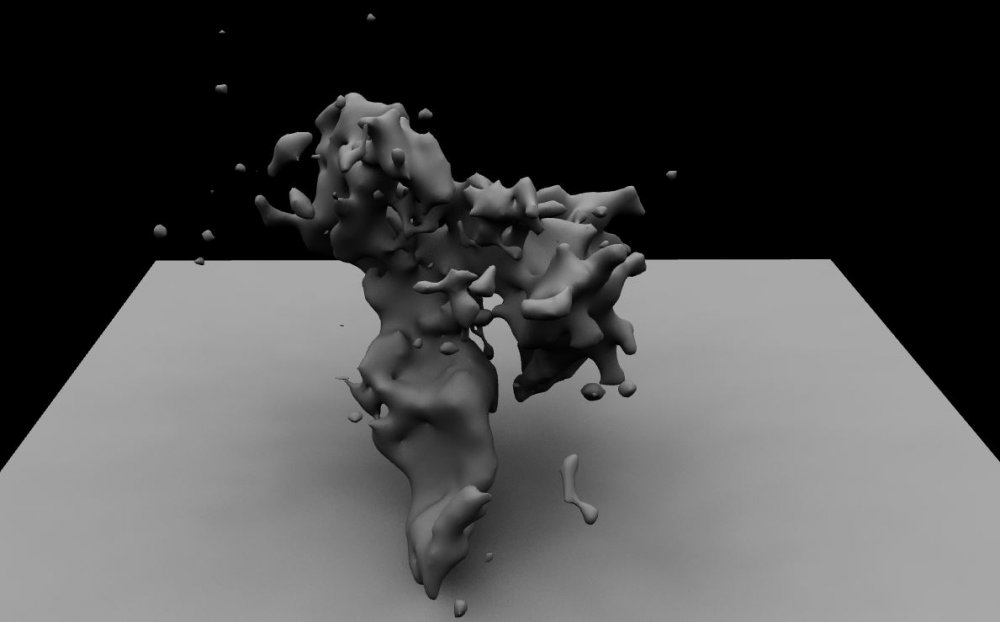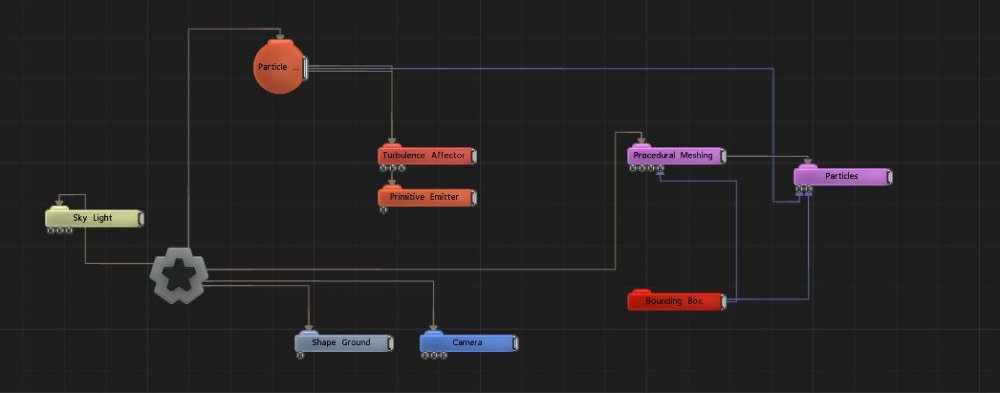Particles
Updated: 22 Mar 2024
Generate shapes from particles for a procedural.

Updated: 22 Mar 2024
Generate shapes from particles for a procedural.

This node generates a distance field using the positions of particles from a particle system.
Nodes connected to this node will generally follow the parent child hierarchy. Other Procedural Generator nodes can be configured to combine with this shape using their CSG modes, and displacement nodes will only apply to this shape.
These properties control the core behaviours of the node.
| Parameter | Details |
|---|---|
| Particle Size | Size of the generated particle shapes. |
| Blob Softness | The softness of the blending between the blobs. only functions with “blobs” selected in field mode. |
| Size Randomness | An amount of randomness applied to the size of each particle shape. |
| Error Distance | Expands the allowable values for generating the Distance Field. Higher values often get rid of jagged edges and odd rendering behaviours, but with decreased performance. |
| Use Particle Colours | If this is enabled then the colour of each primitive will be taken from it’s particle. This only has an effect for procedural renderers that support colour generation. |
| Field Mode |
Change how the emitted particles generate in the procedural system.
|
| CSG Mode |
These options change how a this procedural node combines with the existing of the procedural system.
|
| CSG Blend Weight | How much the new procedural blends with the old procedurals, depending on the CSG Blend Weight. |
| CSG Stair Count | How many steps in the transition when using the “Stairs” CSG Mode. |
| Affect Colour | Toggles whether colour is used or not. |
| Always Enabled (No Time Bars) | Always enabled regardless of node timeline. |
| Material Colour | Modify the colour for the procedural material. |
| Custom CSG Code | Allows for custom code to be used. |
The properties control the time at which the node is active. See Timeline for editing time segments.
| Parameter | Details |
|---|---|
| Duration |
Control the duration of the node’s time segment.
|
| Node Time | The custom start and end time for the node. |
| Duration (Timecode) | The length of the node’s time segment (in time). |
| Duration (Frames) | The length of the node’s time segment (in frames). |
| Time Segment Enabled | Set whether the node’s time segment is enabled or not in the Timeline. |
| Name | Description | Typical Input |
|---|---|---|
| Particle Node | The particle root used to generate the distance field. | Particle Root |
| Bounding Box | The region to which mesh generation will be restricted. | Bounding Box |
| Transform Modifiers | Apply the transforms of another node to this node. | Null |
| Target Node | Modifiy the rotations of the node to always direct the z axis towards the input. | Null |
| Local Transform Override | Apply the transforms of another node to this node, relative to its parent. | Null |